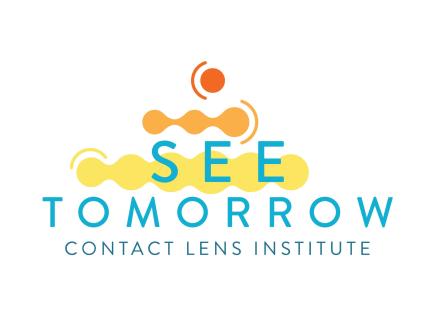
After many long months, things are looking brighter in the United States, and people are looking forward to a post pandemic future. But, things have changed over the past year and a half, for patients and eye care professionals alike.
All of this change can cause uncertainty about how to adapt to a post pandemic climate.[1],[2] One thing is certain, though; understanding the 'new normal' will help you improve your patients' health and grow your business.
Luckily, there is help available to navigate your way forward.
The Contact Lens Institute, (CLI), an industry organization whose members include CooperVision, commissioned two studies this summer to explore evolving attitudes about healthcare in adults in the United States – who they trust, where they spend, and their plans going forward.
Data gathered formed the basis for CLI's See Tomorrow initiative, whose goal it is to encourage the eye care community and consumers to think about how vision and contact lenses may play sizable roles in fulfilling their hopes for the future, according to Contact Lens Institute Executive Director Stan Rogaski.
See Tomorrow's cutting edge peer-to-peer consumer research and practice guide provides an in-depth look at CLI-commissioned data[3] and shares recommendations about how to connect with patients and better meet their expectations.
What's Changed: Some Highlights and Takeaways
People are looking to live more and spend more post pandemic than before, according to data gathered by CLI, and look forward to dining out, spending time with friends and travelling. They also plan on spending at least as much post pandemic on things to improve their health and sense of wellbeing as they did pre-pandemic.
Research further revealed that eye health ranks as one of the most important factors in people's futures. Almost 9 in 10 adults believe healthy eyesight is key to pursuing their dreams. In fact, eye health ranks highest among multiple aspects of personal health.3
But, about 70% of U.S. adults and 62% of prescription glasses wearers say that they have not or don’t know if they have had a conversation with their eye doctor about contact lens wear. And, more than one in two people requiring vision correction say they don’t know much about contact lenses.3
One takeaway? Talk with your patients. Reach out, ask them about any changes in their health and in their lifestyle, and importantly, let them know about new advances in eye care products that might be a good fit for them.
Now, how can you engage patients in person and remotely to convert trust into action?
Get to know what has changed in your patients’ lives and don’t be afraid to offer your recommendations. CLI's research revealed that 73 % of people want their health care professional to alert them to new information that could make their health even better.
And 32 % of people trust online sources more now than before the pandemic.4
People have gotten used to online meetings and more comfortable with digital communication during the past year,[4] so it makes sense to establish or expand online portals to connect with those patients that prefer to communicate virtually.
Help your patients see their new conception of a bright future clearly and distinctly. The studies suggest your patients may now be more open to new solutions to improve their lives, and are willing to spend the time and money needed to achieve a more balanced and healthy lifestyle.
SeeTomorrow's free downloadable PDF practice guide and peer-to-peer infographics, is available at SeeTomorrowNow.com.
[2] https://www.ucsf.edu/news/2020/11/418951/theres-lot-uncertainty-right-now-what-science-says-does-our-minds-bodies
[3] All figures, unless otherwise stated, are from studies conducted by YouGov Plc. Study 1: 1,298 US adults interviewed online between June 29-30, 2021. Study 2: 1,196 US adults interviewed online between July 2-7, 2021. The figures have been weighted and are representative of all US adults (aged 18+)
[4] Accenture. Report: COVID-19: How consumer behavior will be changed. April 2020








